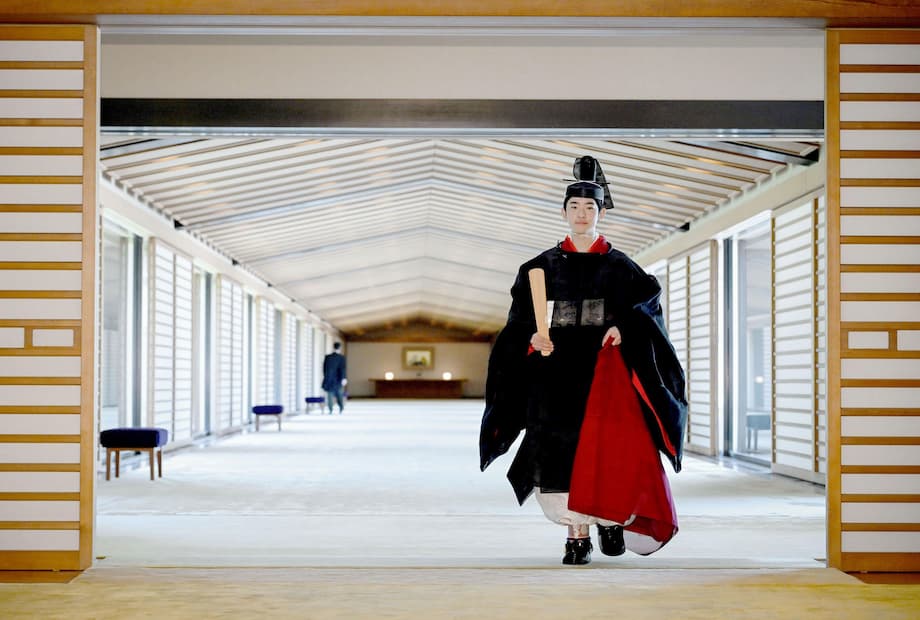A personal milestone with a national question
Japan marked a rare rite of passage this weekend as Prince Hisahito, nephew of Emperor Naruhito and second in line to the Chrysanthemum Throne, entered royal adulthood in a ceremony rich with ancient ritual and precise symbolism. The event honored a 19 year old student who studies biology and keeps field notes on dragonflies. It also cast a sharp light on the narrow future of the world’s oldest monarchy under current male only succession rules. Only two male heirs in the younger generation remain, Crown Prince Akishino and his son Hisahito, and the next in line after them is 89.
- A personal milestone with a national question
- Inside the ceremony
- A shrinking line of heirs
- Public support for change, politics stuck in place
- The human side of a future emperor
- Women at the palace face old rules and modern pressures
- What options are on the table
- Why it matters beyond the palace
- What to Know
For many in Japan, the pageantry came with a sober undertone. The Imperial House faces a very small pool of eligible successors. Polls have for years shown broad support for allowing a woman to ascend the throne, yet legal change has stalled. The spectacle, from the lacquered crown to the horse drawn carriage, doubled as a reminder that tradition and modern life are now colliding inside the palace gates.
Under the postwar constitution, the emperor holds no political power and serves as a symbol of the state and the unity of the people. Even in that limited role, the imperial line has cultural weight that few institutions can match. Chronicles trace the line back more than a millennium, and legend places its origins about 2,600 years ago. Today the central debate concerns the survival of that lineage under a rule that restricts succession to male descendants in the paternal line.
Inside the ceremony
The day began at Prince Hisahito’s family residence in Tokyo. Wearing a tuxedo, he greeted an imperial messenger who delivered the crown from Emperor Naruhito. At the main ritual at the Imperial Palace, the prince first appeared in a beige robe that signals youth. Attendants then replaced his youthful headcover with the adult black kanmuri headpiece, formalizing his coming of age.
After the ritual, the prince expressed gratitude and a public pledge to serve. As a new adult member of the family, his words carried special weight in a house where public statements are rare and carefully scripted.
“Thank you very much for bestowing the crown today at the coming of age ceremony,” Prince Hisahito said. “I will fulfill my duties, being aware of my responsibilities as an adult member of the imperial family.”
He changed into adult attire, in black, and rode by carriage to pray at three sanctuaries within the palace grounds. Later in the day he was scheduled to pay respects to Emperor Naruhito and Empress Masako in the Matsu no Ma, the prestigious pine room, and to receive the Grand Cordon of the Supreme Order of the Chrysanthemum. The round of formal calls included greetings for his grandparents, Emperor Emeritus Akihito and Empress Emerita Michiko.
The program extends beyond a single day. Early next week, the prince plans visits to Ise Jingu, Japan’s most important Shinto shrine, the mausoleum of the first emperor Jinmu in Nara, and the mausoleum of his great grandfather, Emperor Hirohito, in the Tokyo suburbs. A luncheon with Prime Minister Shigeru Ishiba and other dignitaries is set for midweek.
A shrinking line of heirs
The line of succession has rarely looked this narrow in modern times. Emperor Naruhito has one child, Princess Aiko, who under current law cannot inherit the throne. The first in line is the emperor’s younger brother, Crown Prince Akishino. Next is Prince Hisahito. After them comes Prince Hitachi, the 89 year old younger brother of Emperor Emeritus Akihito. There are no other young male heirs in the immediate imperial household.
Historically, Japan did have reigning empresses. Eight women ruled at various points, the most recent in the eighteenth century. None produced heirs during their reigns. A legal shift in the late nineteenth century changed custom into strict rule. The 1889 Imperial Household rules, and later the 1947 Imperial House Law, restricted succession to males in the paternal line. That male line principle excludes the children of princesses from the line of succession even if those children are born within the family. In earlier eras concubines expanded the number of male heirs, a practice that ended about a century ago, leaving a tight bottleneck under the current legal framework.
Public support for change, politics stuck in place
Tokyo has studied reforms for nearly two decades. In 2005, a government panel recommended a straightforward rule, inheritance by the oldest child, regardless of sex. The recommendation would have allowed a woman to reign and for her child to inherit. Momentum evaporated after Prince Hisahito was born in 2006, which eased immediate fears about succession and gave traditionalists new leverage to keep the male line system intact.
Another panel of experts reported in 2022 with a conservative leaning blueprint. It backed male line succession, suggested allowing princesses to keep their imperial status after marriage so they can continue official duties, and floated the idea of adopting male descendants from former collateral branches that lost imperial status in 1947. Lawmakers have not agreed on whether husbands of princesses and their children should receive imperial status, a key sticking point that has stalled a final proposal. Editorial voices, including leading conservative newspapers, have urged parliament to revise the Imperial House Law to avoid a crunch, including letting women remain in the family after marriage and exploring female succession.
Shingo Haketa, a former chief of the Imperial Household Agency who managed palace affairs, has warned that the lack of a clear path forward concentrates pressure on one teenager.
“The stalled debate has forced Hisahito to carry the burden of the Imperial Family’s fate by himself,” Haketa said.
Public opinion continues to favor change. Hideya Kawanishi, a royal historian at Nagoya University, noted how the political mood shifts once the ceremonies fade.
“If people who are generally supportive of female emperors become a bit louder, then politicians can become more serious,” Kawanishi said. “But when ceremonies end, society, including the media, calms down and moves on.”
The human side of a future emperor
The young man at the center of this national conversation is settling into university life. A freshman at the University of Tsukuba near Tokyo, Prince Hisahito studies biology. He has a particular interest in insects, especially dragonflies, and has co authored a survey of dragonfly species in the Akasaka Imperial Grounds. He has spoken about protecting insect populations in cities, a niche of urban ecology that mirrors the scientific interests of Emperor Emeritus Akihito, who published research on gobies, and the broader tradition of imperial support for the sciences and the arts.
The prince plays badminton, grows vegetables and rice on palace grounds, and has kept his public comments measured. At his debut news conference in March, he pledged to approach his new responsibilities seriously and attentively. The palace says he will gradually take on more public duties while continuing his studies. His image as a relatable student has helped counterbalance the intense scrutiny that surrounds his family life.
Public debate has at times addressed his schooling and path to university. For now, his academic focus and quiet campus routine appear to be his anchor as larger constitutional questions move slowly through government committees.
Women at the palace face old rules and modern pressures
Current law requires female members of the imperial family to leave the household when they marry a commoner. Princess Mako, Prince Hisahito’s elder sister, lost her title in 2021 when she married her college partner, Kei Komuro. The couple relocated to the United States after intense tabloid scrutiny, and the palace later disclosed that Mako had developed post traumatic stress disorder. Empress Masako, once a high profile diplomat, faced years of stress related illness after marrying into the family. Empress Emerita Michiko also experienced stress induced health problems during her time as empress.
These stories are part of the backdrop as lawmakers weigh reforms. Princess Aiko, the only child of Emperor Naruhito and Empress Masako, enjoys strong public support and is in the direct line of descent. Under the current law she cannot succeed to the throne, and if she marries outside the family she would have to leave the household. Advocates of change say the rules push capable women out of public service and weaken the institution by shrinking it.
What options are on the table
The policy menu is well known in Tokyo, but none of the choices are simple. Each requires legal amendments, political consensus, and careful handling of the public role of the imperial family. Lawmakers and scholars commonly discuss the following paths:
- Adopt absolute primogeniture. The oldest child, regardless of sex, would inherit. This aligns with many European monarchies and would immediately place Princess Aiko in the line of succession.
- Allow a reigning empress to pass the throne to her child. This would recognize maternal descent as a valid route, ending the exclusive focus on the paternal line.
- Reinstate male descendants from former imperial branches. Japan abolished 11 collateral princely houses in 1947. Some conservatives want to bring qualified men from those lines back into the family, or adopt them in, to bolster the male line.
- Let princesses keep their imperial status after marriage. Retention would keep experienced women in public service. A further step, still contested, would be granting imperial status to their spouses and children and determining how those children rank in the succession.
- Expand the family through limited adoption within reformed rules. This would require clear criteria and public transparency to maintain trust.
Any change would touch the identity of the modern imperial system. The emperor stands above politics as a unifying figure. Reworking the family that supports that role requires a balance between historical continuity and present day expectations about gender and fairness.
Why it matters beyond the palace
The imperial family sits at the intersection of culture, soft power, and national memory. Ceremonies like Hisahito’s enthronement style rites rely on rituals that date back centuries, and the institution anchors civic life in moments of crisis or celebration. A succession crunch risks a break in continuity that many Japanese regard as part of the country’s living heritage.
Demography adds another layer. Japan’s population is shrinking and aging. In 2024, the country recorded close to one million more deaths than births, the steepest annual decline since the late 1960s. Prime Minister Shigeru Ishiba has described this as a quiet emergency and has promoted measures like expanded childcare and more flexible work. The same demographic headwinds affect the imperial family, where there are no children and only a handful of potential heirs.
The stakes are clear even if the timeline is not. Without reform, the line could end if Prince Hisahito does not have a son or if future health and personal choices reduce the pool further. With reform, the family could stabilize by making room for women to reign or by rebuilding the household around existing princesses and their families. The debate now unfolding will shape how Japan balances reverence for tradition with the practical needs of a modern constitutional monarchy.
What to Know
- Prince Hisahito, 19, marked his coming of age with palace rituals that included receiving a black kanmuri headpiece and prayers at imperial sanctuaries.
- He is second in line after his father, Crown Prince Akishino. The only other person currently in the line is Prince Hitachi, who is 89.
- Under the 1947 Imperial House Law, only men in the paternal line can inherit the throne. Princess Aiko, the emperor’s daughter, is excluded.
- Japan has had eight reigning empresses in its history, but inheritance has been legally limited to males since 1889.
- A 2005 government panel recommended inheritance by the oldest child, regardless of sex, but momentum faded after Hisahito’s birth in 2006.
- A 2022 expert panel supported keeping the male line while allowing princesses to retain status after marriage and considering male descendants from former branches.
- Public opinion polls show strong support for female succession and for allowing women to stay in the imperial family after marriage.
- Hisahito’s schedule includes visits to Ise Jingu and imperial mausoleums, as well as a luncheon with Prime Minister Shigeru Ishiba.




